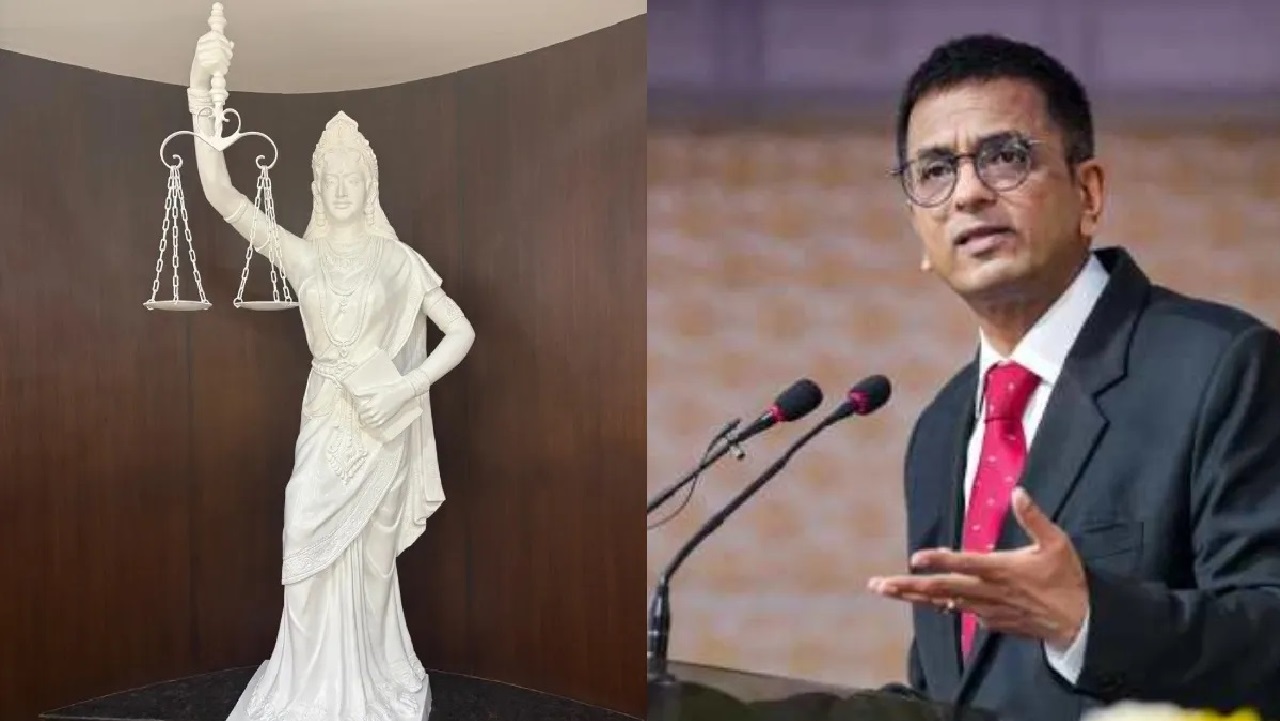
A New Era in Indian Law
India is moving away from its colonial past with significant reforms to its legal framework. The recent replacement of the British-era Indian Penal Code (IPC) with new laws, such as the Bharatiya Nyaya Sanhita, reflects this transition. In line with these changes, the Supreme Court of India has also updated its symbol of justice. The familiar statue of ‘Lady Justice’—historically depicted wearing a blindfold and holding a sword—has undergone a transformation, symbolizing the evolving identity of the Indian judiciary.
A New Vision: Lady Justice Unveiled Without a Blindfold
In a bold and symbolic move, the Supreme Court has removed the blindfold from the iconic figure of Lady Justice. Traditionally, the blindfold represented impartiality, suggesting that justice is delivered without bias. However, Chief Justice of India (CJI) DY Chandrachud has introduced a new perspective, stating, “The law is not blind; it sees everyone equally.” This shift reflects the court’s commitment to recognizing the individuality of each case and ensuring that justice is not dispensed with indifference but with awareness and fairness.
Constitution Replaces the Sword: A Shift in Justice’s Tools
In the revamped statue, another significant change is the replacement of the sword with the Indian Constitution. Earlier, the sword symbolized punishment, representing the authority of law enforcement. Now, by holding the Constitution, the statue highlights that justice in India is rooted in the values enshrined in the nation’s highest legal document. The scales, representing fairness and equality, remain intact, emphasizing that while justice may require balance, it is guided by constitutional principles rather than sheer force.
Moving Beyond Colonial Legacy
The transformation of Lady Justice’s statue is part of a broader initiative to distance India’s legal system from its colonial heritage. Under CJI Chandrachud’s leadership, the judiciary is reinforcing its commitment to justice based on the values of modern India, rather than outdated colonial concepts. By removing the blindfold and placing the Constitution in the statue’s hand, the Supreme Court sends a clear message: the law sees, acknowledges, and serves every citizen equally, with fairness and adherence to constitutional rights.
A Symbol of Justice in New India
The updated statue of Lady Justice represents a profound shift in how justice is perceived in India. It reflects the judiciary’s move toward a more inclusive, aware, and constitutionally grounded approach, marking the beginning of a new chapter in India’s legal journey. The message is clear—justice in New India is not blind, but vigilant, impartial, and deeply rooted in constitutional values.
(With inputs from agencies)







